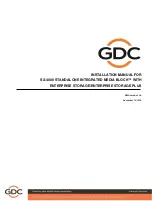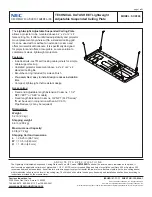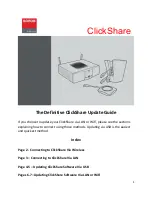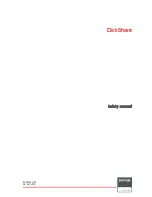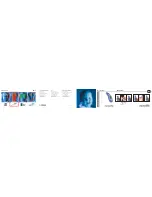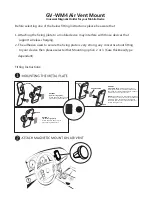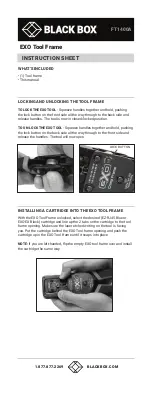
Num‐
ber
Function
Parameter
Comment
3rd Sense
–
4th Sense
–
Max Sense
–
Adjusted
Configure via
Translucent
Teach
2
Measure polarity
Positive
Negative
3
Moving averaging
1
to
128
–
4
Zeroing value
-5.000
Up to
9.999
(
0.000
)
–
5
Measure Type
Edge
–
Width
–
6
Measure direction
Top
Object comes into
light band from above
Bottom
Object comes into
light band from below
7
Direction Checking
OFF
ON
8
Reset Settings
Not Reset
–
Execute by
A
–
“Measure polarity” direction function
Direction function only works with edge measurement (
Edge
).
1
OL1 sender
2
OL1 receiver
3
Upper
4
Lower
Use the direction function to configure how the measured values are displayed
from the top or bottom (cable side).
Positive: Top -5.000 mm, 5.000 mm
Negative: Top +5.000 mm, bottom -5.000 mm
6.2 OL1 “Teach mode” teach-in menu
Teach-in option
Number
Function
Comment
1
Zeroing
–
2
Reset Zeroing
–
3
Translucent Teach
Adapts the sensitivity value.
Translucent Teach
is recommended
for semi-transparent materials to improve the
detection results
It is only possible to use the
Translu-
cent Teach
if the sensitivity is set to
Adjusted
in the Setup mode
“Setup mode” configuration menu, page 2
The
Transluent Teach
is run without
an object in the measuring range.
7
Application examples
1.
Keep pressing
until an arrow appears in front of
Head 1 or 2
(depending on where the OL1 is assembled).
2.
To access the
Top Menu
, press
A
.
3.
To select
Setup mode
, press
.
4.
Press
until
Measure Type
is displayed.
5.
To select
Edge
or
Width
, press
or
.
6.
To confirm, press
A
.
7.
To return to the main screen, hold
B
.
8.
To exit the
AOD1, Head 1, Head 2
selection mode on the main screen,
press
B
.
“Edge” detection application
•
Measure the edge position relating to the measuring range center of the light
band with leading edge detection
see AOD1 device display and OL1, page 2
•
When more than one edge is in the measuring range, the device cannot
measure and show the value
9.999
(background remains black).
“Edge” detection application for transparent objects
NOTE
Safe edge detection is not guaranteed for very transparent objects (above
approx. 80% transmission).
•
The function works the same as for edge detection of non-transparent
objects.
•
The “Adjusted” value must be set in the “Sensitivity” setting for edge detec‐
tion of transparent objects. For optimal sensitivity adjustment, there must be
no measuring object between the sender and the receiver
mode” configuration menu, page 2
•
The direction from which the object protrudes into the measuring range must
be specified in the "Measure polarity" menu item
.
“Width” and diameter measurement application
•
Measures the distance between two edges.
•
In this measurement type, the device shows the measured value of
0.000 mm to 9.999 mm.
•
The device distinguishes between light-dark and dark-light edges. Then the
width function can measure both the width and the gap.
•
In “Width” mode, there must always be exactly two edges inside the measur‐
ing range. If there are more than two edges inside the measuring range, the
output measured values are not specified.
•
If there is no or only one edge in the measuring range, the device shows an
alarm or “cannot be measured”.
•
The direction function (
Measure polarity
) does not work for width mea‐
surement.
Figure 1: Measurement of the gap between two objects edges
Figure 2: Measurement of object width
8
Cleaning
NOTICE
Equipment damage due to improper cleaning.
Improper cleaning may result in equipment damage.
•
Only use recommended cleaning agents and tools.
•
Never use sharp objects for cleaning.
Clean the front screen at regular intervals and in the event of contamination
using a lint-free lens cloth (part no. 4003353) and plastic cleaning agent
(part no. 5600006). The cleaning interval essentially depends on the ambi‐
ent conditions.
9
Technical data
NOTE
The relevant online data sheet for your product, including technical data,
dimensional drawing, and connection diagrams can be downloaded, saved,
and printed from the Internet:
•
Please note: This documentation may contain further technical data.
9.1 Mechanics/electronics
Supply voltage V
S
12 V DC ... 24 V DC, ± 10%, including residual ripple
8022330/17Y7/2020-07-10/en
OL1 | SICK
3





